When we finally accepted that we were not getting a visa for Sudan, we left Addis Ababa and embarked upon a ten-hour bus ride to Bahir Dar, a fairly picturesque city located on Lake Tana. While there are plenty of places in town to sit and admire the lake, the real attractions are a couple of worthwhile day trips.
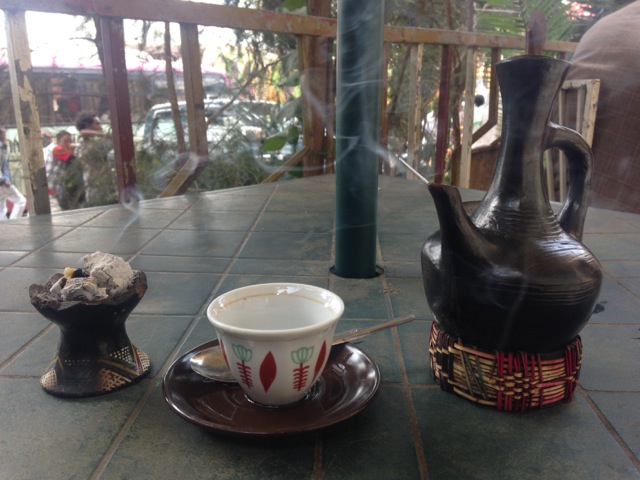
Blue Nile Falls
About 30 kilometers from Bahir Dar, the Blue Nile river1 cascades in a waterfall known as both the Blue Nile Falls and Tis Abay, which is Amharic for “smoking water.” Our hotel recommended we join a tour or hire a driver to visit the waterfall, but we found the trip to be easy enough to handle on our own.
We headed to the Bahir Dar bus station to pick up the bus to Tis Abay town and were pointed in the direction of a school bus tricked out with fringe and shiny Christian iconography. We couldn’t locate anyone from whom to purchase tickets or even confirm this was the right bus, but we took seats and hoped for the best.
When the bus was filled (and then some), a driver materialized and began the trip down what must be one of the worst roads in Africa. Our guidebook had indicated the road was bad, but I wasn’t worried. By this point on the trip, I considered myself something of a pro at traveling down terrible roads. I mean, remember Tanzania? But our journey down the approximately 28-kilometer stretch of road took more than an hour, and we spent so much time being tossed up, down, and sideways by the bumps in the road that I was sure I was doing permanent damage to my spine.
When we arrived, we knew that we had only about an hour to see the falls before we needed to be back in town to catch the bus back to Bahir Dar. Luckily, the young local guide that we hired kept us on task, hurrying us up a hill to catch our first glimpse of the waterfall and then prodding us along the path to make sure that we took in more views.
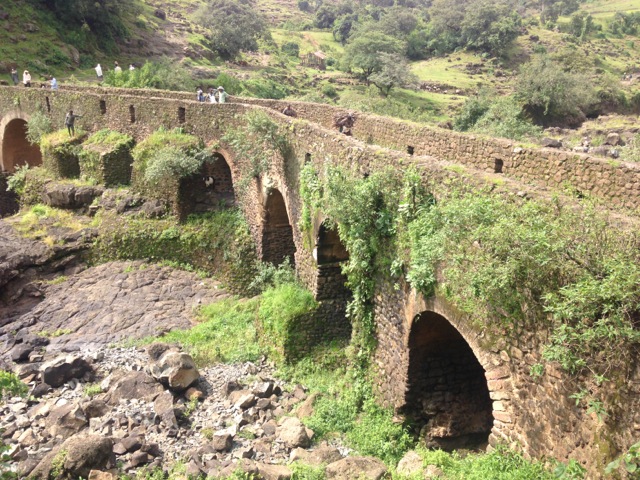
Without him, we probably would have just stood at the first viewpoint for the rest of the day, gaping. The waterfall was, in a word, stunning. I had thought that we might be underwhelmed since we had already visited Victoria Falls on this trip, but the Blue Nile Falls were some of the more compelling falls that I have ever seen.
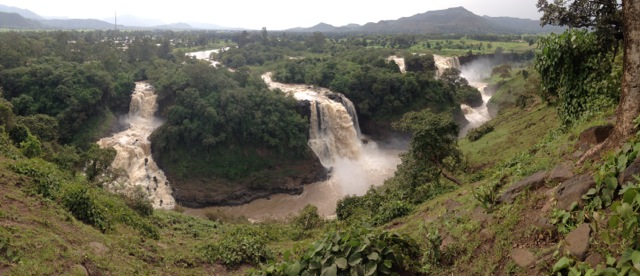
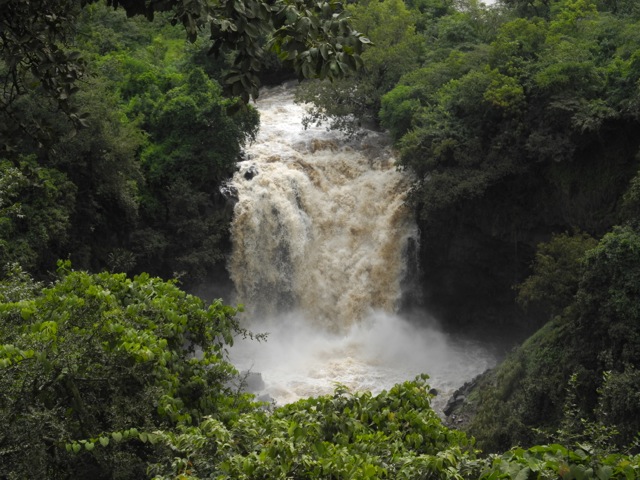
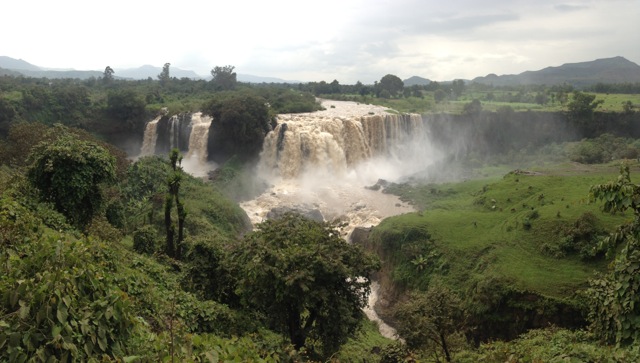
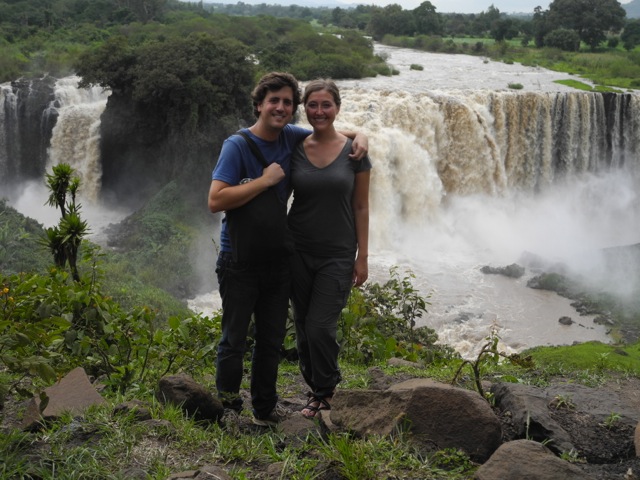
Instead of leaving the same way that we had come, our guide led us down closer to the falls, then over a pedestrian cable bridge and through some fields (where I got a sandal-full of mud) to a boat which took us back across the river to town to pick up the bus.
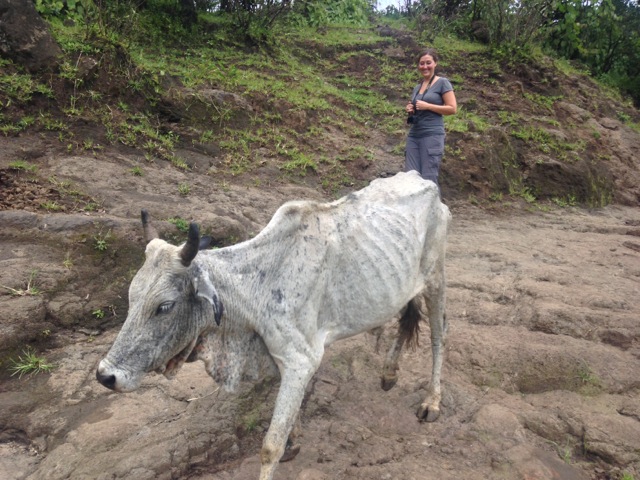
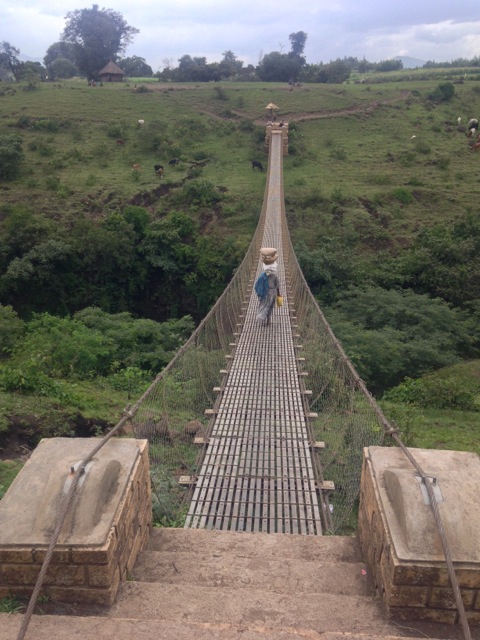
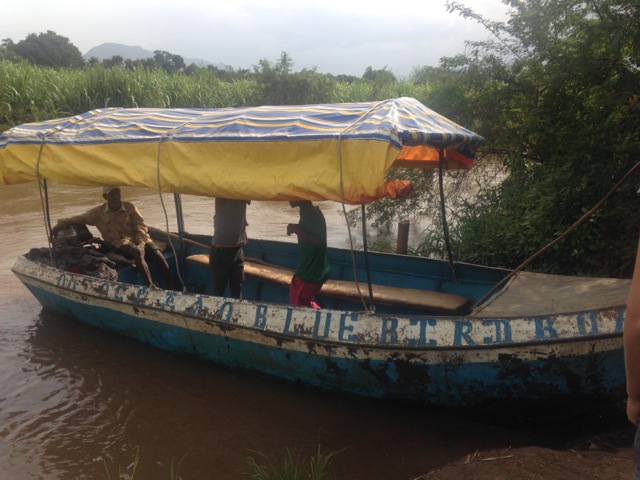
We had a beautiful afternoon at the falls, but we were traveling in Ethiopia during the rainy season, and so the weather couldn’t remain nice for long: on our way back to Bahir Dar, the sky opened up. Our poor bus was no match for the downpour, and soon it was raining inside the bus. I was legitimately worried that the bus would get stuck in the rutted road that was quickly turning to mud, but somehow we made it back to Bahir Dar – whereupon we got soaked dashing from the bus to a waiting tuk tuk.
Lake Tana Monastery Tour
The morning after our waterfall adventure, we set out on an organized boat tour to see some of the nearby monasteries. Some of the oldest monasteries in the world, dating from the 16th and 17th centuries, are located on the shores of Lake Tana. Our boat tour was billed as a half-day excursion, but we ended up spending most of the day traveling around the lake and visiting several intriguing monasteries.
First, we visited Bete Maryam. This was the most objectively lovely monastery that we saw. We had to hike uphill through dense vegetation and a gauntlet of vendors to reach Bete Maryam, but it was definitely worth it. The murals decorating the walls of the small, round monastery were amazing. (They were also incredibly bright, as the monastery had been restored following water damage.)
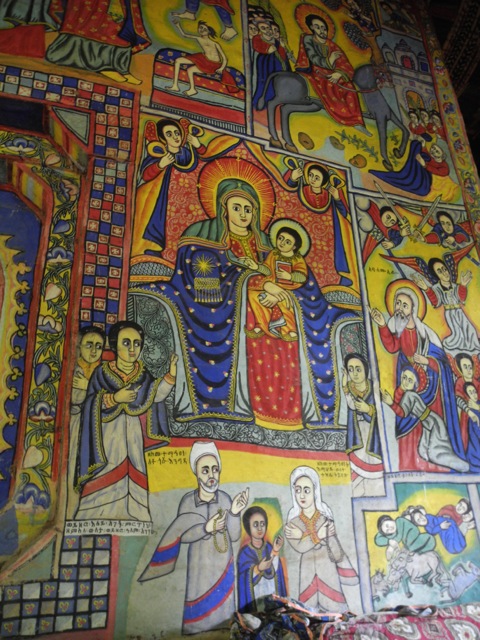
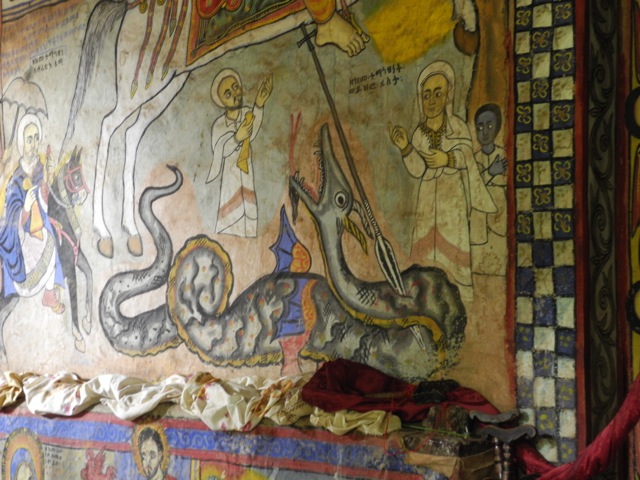
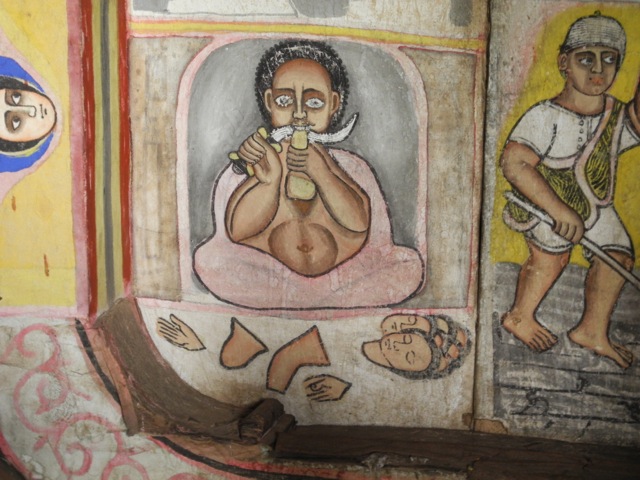
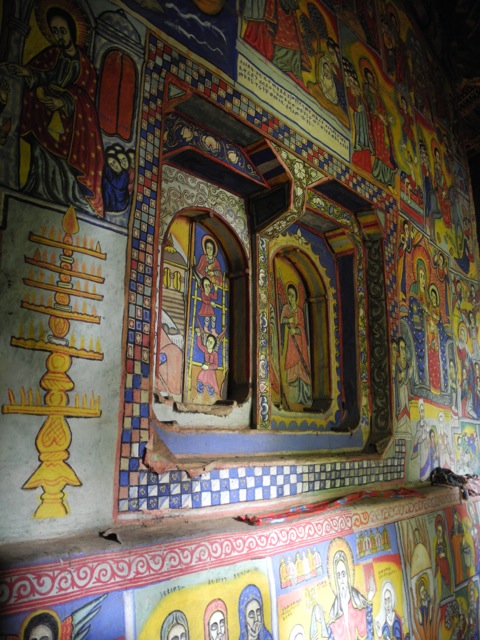
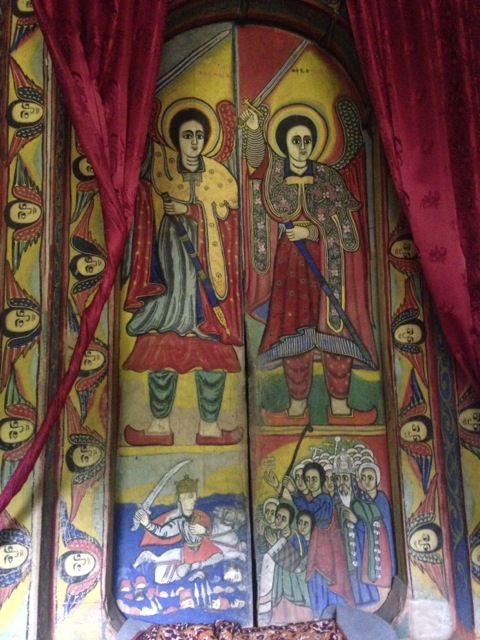
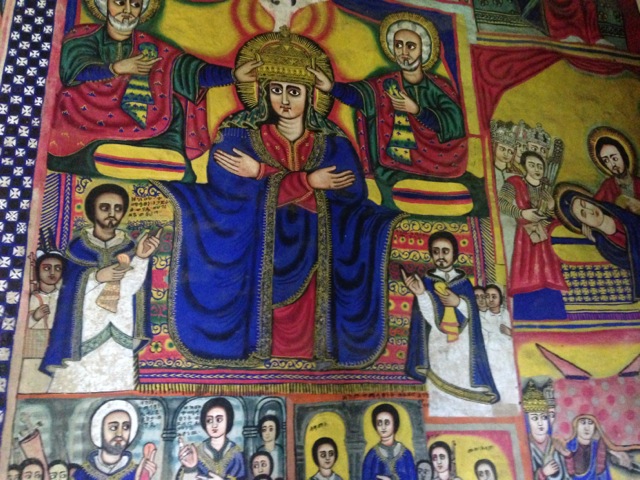
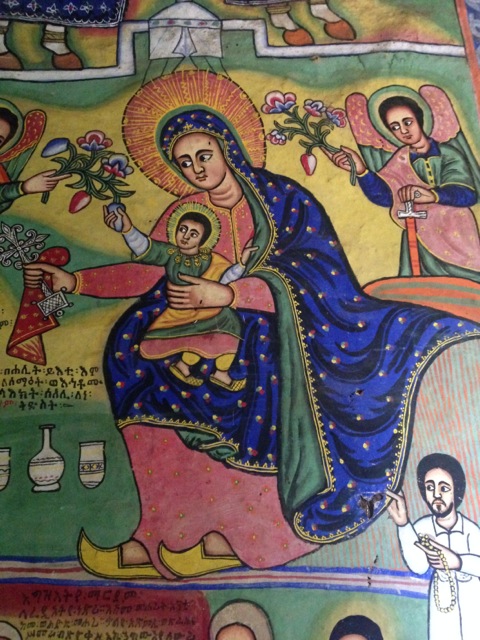
As we left Bete Maryam, we walked past Bete Giorgis, which was being rebuilt following a fire, and popped into its small museum.
The boat trip’s next stop was Kebran Gabriel, where Marc and I did not go inside. The monastery is male-only, and women are only allowed in the museum – a privilege for which they want to charge 50 birr. We passed.
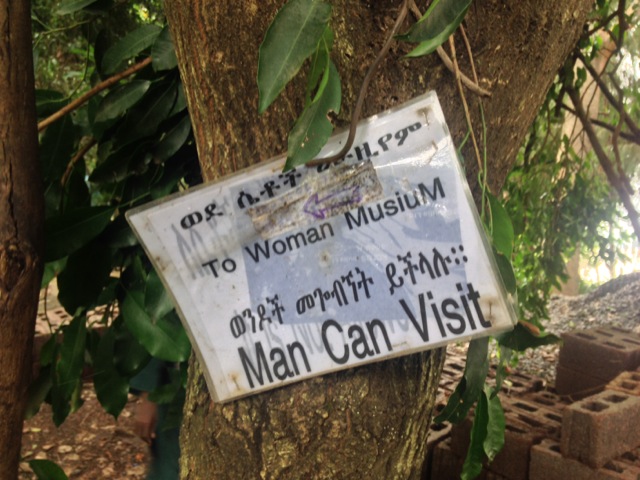
Next, we visited Entos Eyesu. Our guidebook didn’t have many complimentary things to say about this monastery, but we decided to go inside anyway.2 It was a recently constructed monastery, so it certainly wasn’t as lovely as Bete Maryam – but it was interesting seeing a modern interpretation of the same architecture, not to mention a working monastery.
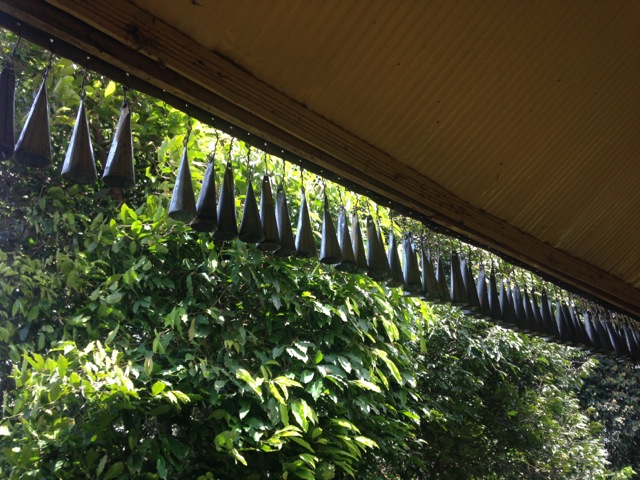
The highlight of this stop was the visit to the small museum, where an adorable nun showed us the artifacts, including a 14th century book made of goatskin with colorful illustrations done in natural ink.
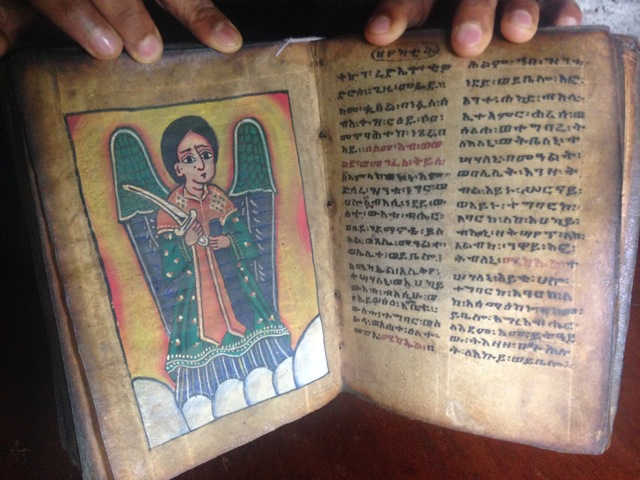
Finally, we stopped at Debre Maryam. This monastery was further away from the others, and the boat ride was a little nerve-wracking. The boat was thrashing against the waves and water kept splashing inside the boat. On our way there, we saw the source of the Blue Nile – which was fun for us because, as you might remember, we saw the source of the White Nile while in Uganda. We decided not to go inside this monastery (the guidebook didn’t speak highly of it, and so we couldn’t justify another hefty admission fee), and instead had coffee with one of the vendors.
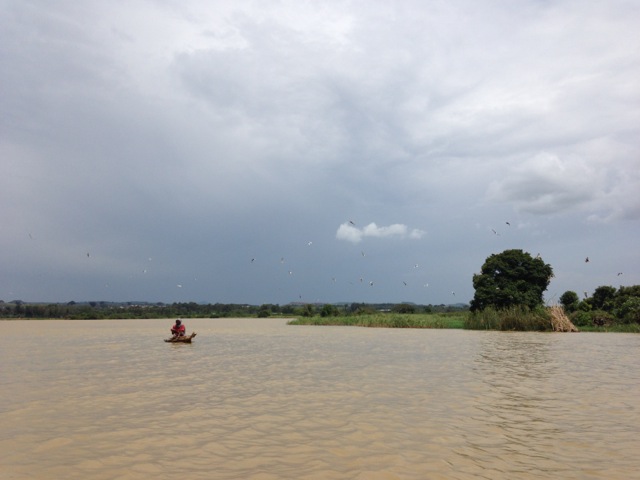
Where We Stayed:
☆ Jacaranda Hotel. Three-and-a-half-goats. This new-looking hotel had a nice location, free wifi, and a good view of Lake Tana from our room. It also had an extremely weird breakfast.
Where We Ate:
☆ Flavor Juice. Have I mentioned how much we loved drinking fresh juice in Ethiopia?
☆Kuriftu Resort. We took ourselves here for dinner for a little atmosphere. The resort is beautiful and offered tasty food and cheap South African wine. We enjoyed it so much that we ended up dining there twice – the second night, we came in to find the place completely packed with what looked like a convention of some sorts. It turned out to be a convention for Ethiopian surgeons (attended by some of the people that we recognized from our boat tour), but they found a table in the corner for us anyway.
☆ Wude Coffee. We had a late lunch here after coming back from the boat tour. We had a plate of fasting food and a tibs – the food was good, although not some of my favorite Ethiopian. (Bonus: our waitress was wearing a Pizza Hut shirt.)
1 The Blue Nile and the White Nile are the two major tributaries to the Nile River.
2 Each of the monasteries charge an admission fee of 100 birr (~USD$5) per person. Although not much in isolation, the costs for two people begin to add up when your boat trip stops at five different monasteries. As a result, we tried to be selective about which of the monasteries we actually entered.

